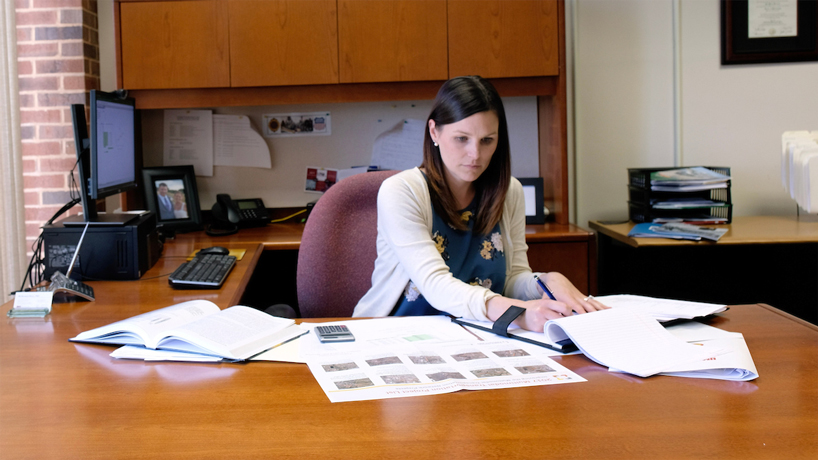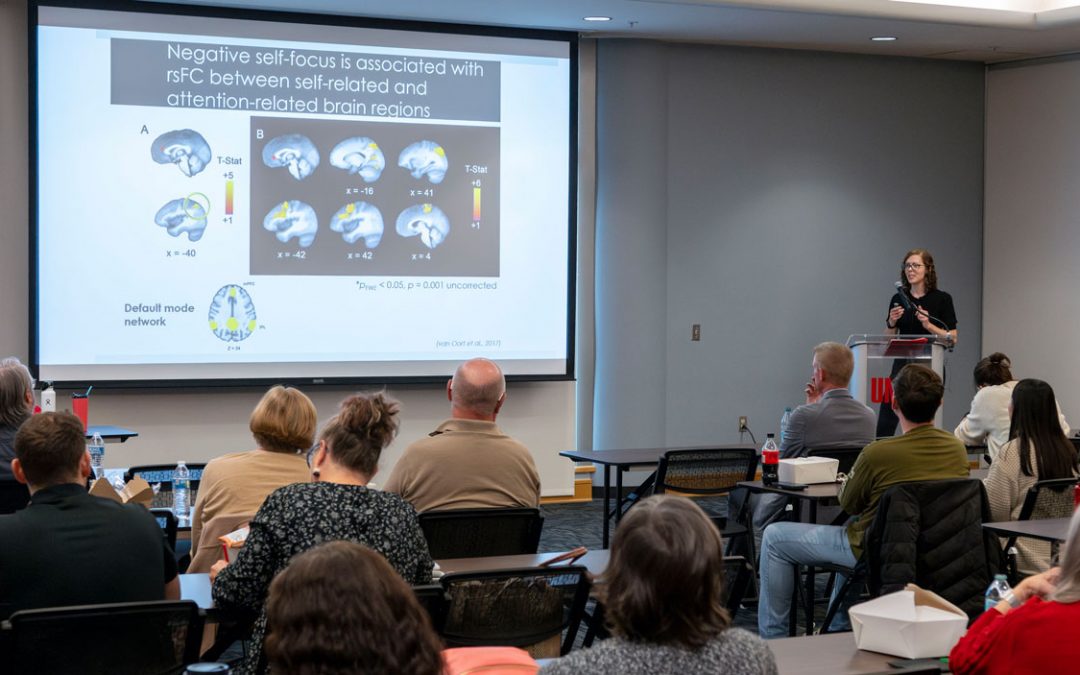
KSDK (Channel 5) in St. Louis and WJLA (Channel 7) in Washington both featured Assistant Teaching Professor Jill Bernard Bracy, the interim director of UMSL’s Center for Transportation Studies, in reports about reflective pavement markers. (Photo by August Jennewein)
Jill Bernard Bracy serves as the interim director of the Center for Transportation Studies at the University of Missouri–St. Louis and has conducted research into a number of traffic safety issues.
The assistant professor in the College of Business Administration has been in demand for her expertise in recent months, first locally and then in Washington, where she’s been called upon to discuss instances of cast iron road reflectors coming loose from the pavement and getting thrown through the windshields of oncoming cars.
Illinois and Virginia, just across the Potomac River from the nation’s capital, reportedly are among four states that still use the 5-pound reflective pavement markets – often referred to as RPMs – which are intended to enhance the vision of drivers in poor weather conditions and were designed to withstand wear and tear from snowplows.
KSDK (Channel 5) in St. Louis talked to Bracy in May about an incident in Illinois where the safety tools became a danger for a woman driving her granddaughter to a dance practice. This week, Bracy appeared on camera in a news story on Washington’s ABC-affiliate WJLA (Channel 7) about a similar accident along I-495 in Virginia.
“They can be incredibly dangerous just given the size of the barrier or the debris itself,” Bracy told WJLA and offered up a few safer alternatives many other states have adopted. “There are smaller plastic reflectors, ones that sit flat on the roads. There is reflective tape, and there are rumble strips.”
Her comments echoed those from the earlier interview with KSDK.
“So why would I have a physical barrier that can become debris in the road when I don’t need it? When I can serve both purposes with something else,” Bracy told the station.
To see watch the full story on WJLA, click here. To see the full story on KSDK, click here.














